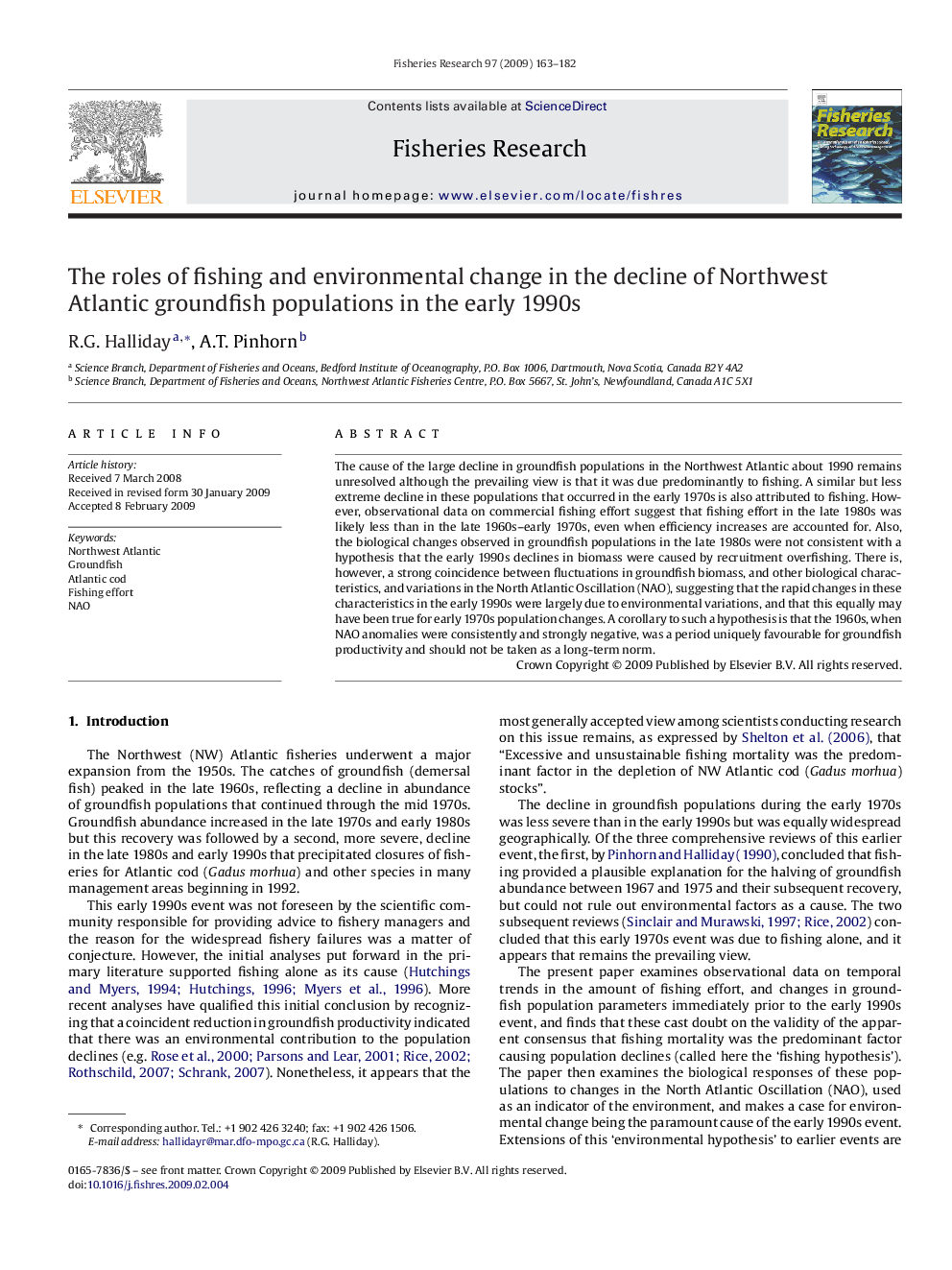| Article ID | Journal | Published Year | Pages | File Type |
|---|---|---|---|---|
| 4544212 | Fisheries Research | 2009 | 20 Pages |
The cause of the large decline in groundfish populations in the Northwest Atlantic about 1990 remains unresolved although the prevailing view is that it was due predominantly to fishing. A similar but less extreme decline in these populations that occurred in the early 1970s is also attributed to fishing. However, observational data on commercial fishing effort suggest that fishing effort in the late 1980s was likely less than in the late 1960s–early 1970s, even when efficiency increases are accounted for. Also, the biological changes observed in groundfish populations in the late 1980s were not consistent with a hypothesis that the early 1990s declines in biomass were caused by recruitment overfishing. There is, however, a strong coincidence between fluctuations in groundfish biomass, and other biological characteristics, and variations in the North Atlantic Oscillation (NAO), suggesting that the rapid changes in these characteristics in the early 1990s were largely due to environmental variations, and that this equally may have been true for early 1970s population changes. A corollary to such a hypothesis is that the 1960s, when NAO anomalies were consistently and strongly negative, was a period uniquely favourable for groundfish productivity and should not be taken as a long-term norm.
